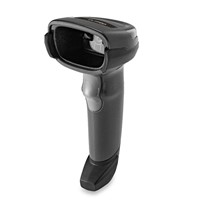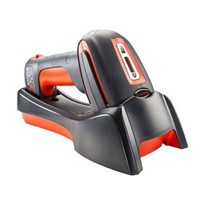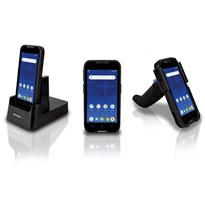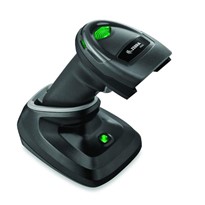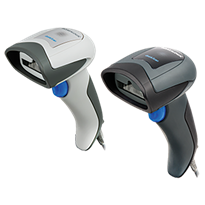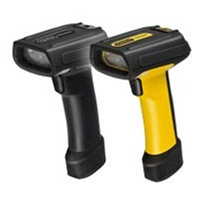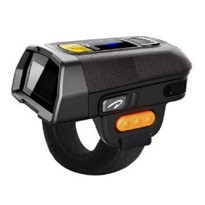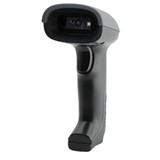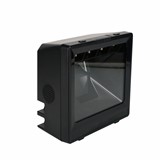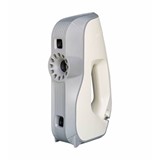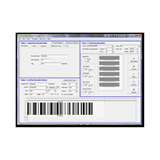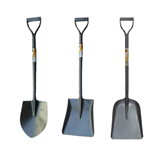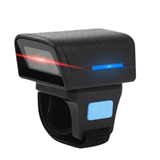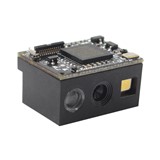Handheld scanners can be compared to a computer keyboard, they are a device used to enter data into a computer or operating system, as opposed to a mobile computer which runs an operating system and is equipped with a built-in scanner.
To determine the best handheld barcode scanner for your application the following questions can assist in your decision making.
- What kind of barcodes are being scanned? E.g. 1D, 2D
- What is the working environment? E.g. Warehouse, Point of Sale/Cash Register
- How often will the scanner be used? E.g. Hourly, constantly, only when receiving or picking
- Will it remain in the one positon or do you require mobility? E.g. Cord or Cordless scanner
Scanner Type
- Laser scanners
- Are the most well-known type of scanner
- Scan traditional 1D barcodes
- Work by using a laser-beam light source, and the barcode is decoded by a photo diode which measures the light reflected back from the barcode into the laser.
- Linear Imager Scanners
- Work more like a digital camera capturing the image and then decoding it, (just like a smart phone)
- Only read 1D barcodes
- Have the advantage of reading barcodes on any surface, including digital devices and can even read damaged or poorly printed codes.
- Area Imagers
- Capture the barcode as an image before analysing and decoding it.
- Read 1D barcodes as well as 2D barcodes, which contain significantly more information in the code.
- Have omni-directional reading capability, where the orientation of the barcode doesn’t need to be positioned to suit the scanner, resulting in faster reads and less time spent aiming the scanner.
- High-performance Area Imagers can also capture and transfer images, like signatures or a photographic image, useful for proof of delivery or evidence of a damaged shipment.
Connectivity
The information that has been decoded from the barcode will need to be transferred to a computer, cash register or host operating system. The simplest and most cost-effective method to communicate is via a USB cable. Corded systems offer easy plug-and-play installation.
Handheld cordless scanners communicate wirelessly with a base station or charging cradle which is connected to the computer via a cable. Again they are simple to install, just plug the base station into the host computer then pair the scanner to the base station.
Cordless scanning offers freedom of movement and productivity gains, especially if you are scanning outdoors, on-floor or have a cross-facility application. Additionally, cordless scanners eliminate the clutter of cables and potential trip hazards of corded devices.
If your application is particularly scan intensive or requires continuous scanning for long periods of time, consider the battery life in the scanner’s specifications.
Some cordless scanners have Batch Mode functionality which allows you to keep scanning even when working outside the wireless range of the base station. The scanned information is stored in the device’s memory and later transferred to the host computer when within range.
Some handheld scanner models have a stand accessory which allows for presentation scanning. This enables ‘hands-free’ scanning, and there is no need to hold the scanner, just wave the barcode past the scanner to read the code.
Ruggedness
There are handheld scanners available for all working environments. Basic models are designed for retail, office or light industrial use. Scanner manufacturers know that scanners do get dropped and knocked, so even standard models are designed to survive drops onto concrete.
For demanding, industrial environments, there are handheld scanning devices that are designed with IP65-seals to withstand dust and water. These tough scanners are built to tolerate 5000 2m drops, even in freezer conditions.
In less challenging environments scanners are sometimes mistreated so investing in a more rugged design can prove a wise decision when compared not only the cost of a replacement scanner but also the cost of the downtime from being without a scanning device.



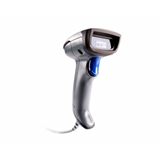

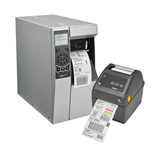
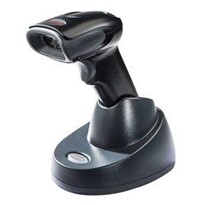
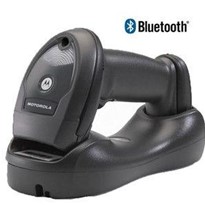
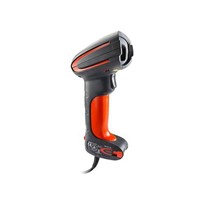
-205x205.jpg)
